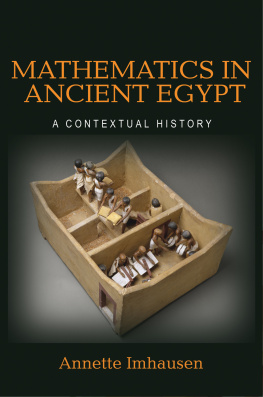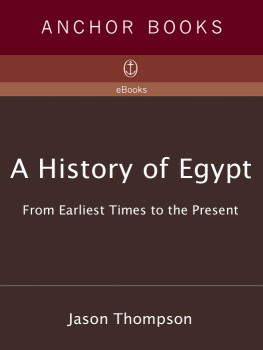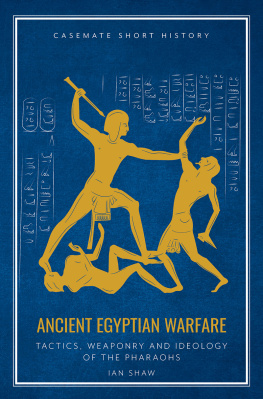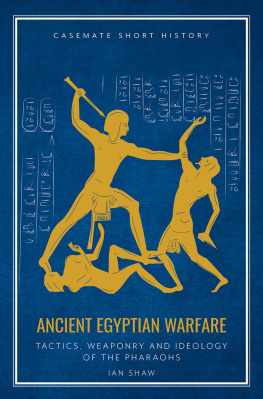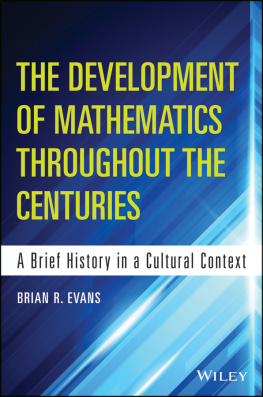
Mathematics in Ancient Egypt
Mathematics in Ancient Egypt
A Contextual History
Annette Imhausen
Princeton University Press
Princeton and Oxford
Copyright 2016 by Princeton University Press
Requests for permission to reproduce material from this work should be sent to Permissions, Princeton University Press
Published by Princeton University Press, 41 William Street, Princeton, New Jersey 08540
In the United Kingdom: Princeton University Press, 6 Oxford Street, Woodstock, Oxfordshire
OX20 1TW
press.princeton.edu
Jacket image: Model granary from tomb of Meketre. Middle Kingdom, ca. 19811975 B.C.
Wood, plaster, paint, linen, grain, H. 36.5 (14 3/8 in.); l. 74 (29 1/8 in.); w. 58 cm (22 13/16 in.).
Egyptian; Thebes, Meketre. Rogers Fund and Edward S. Harkness Gift, 1920 (20.3.11).
The Metropolitan Museum of Art. Image source: Art Resource, NY
All Rights Reserved
Library of Congress Cataloging-in-Publication Data
Imhausen, Annette.
Mathematics in ancient Egypt : a contextual history / Annette Imhausen.
pages cm
Includes bibliographical references and index.
ISBN 978-0-691-11713-3 (hardcover : alk. paper) 1. Mathematics, Egyptian. 2. MathematicsHistory. I. Title.
QA27.E3I43 2015
510.932dc23
2015009708
British Library Cataloging-in-Publication Data is available
This book has been composed in Minion Pro.
Printed on acid-free paper.
Printed in the United States of America
10 9 8 7 6 5 4 3 2 1
Contents
Preface
T his book is the result of the first ten years of my postdoctoral research. Despite the length of time it took to complete it, I am very aware that the results described in the book are temporary at best. Much work still has to be done in all areas of Egyptian mathematics, from its very beginnings, i.e., the development of numbers and metrological systems, until its final stages in Demotic or even Coptic Egypt. But even those areas that have traditionally been the focus of research on Egyptian mathematics, i.e., the mathematical papyri from the Middle Kingdom/Second Intermediate Period, are not fully explored. However, despite all these aspects of non-definitiveness, I hope that this book will still be able to serve as an introduction to Egyptian mathematics for those who are interested in it. The essential place that mathematics held within the ancient Egyptian culture is also reflected by its direct or indirect occurrence in texts other than mathematical and administrative documents. I have included examples of these texts and in doing so have drawn freely on the work of many scholars. Translating ancient Egyptian texts is never a trivial task, and as time has shown, translations will alter with our growing knowledge of the Egyptian language and culture. The translations given in this book thus represent the authors understanding at the time the translation was done.
In the years that this book was conceived and written, I have experienced much support, which I am grateful to acknowledge. Even after the completion of my dissertation project and subsequent postdoctoral fellowships, my former Doktorvter Jim Ritter and David Rowe have been invaluable as teachers, mentors, colleagues, and friends and I am especially grateful to both of them. Work on this book was begun during a Junior research fellowship at Cambridge, UK, and I am very grateful to Trinity Hall, Cambridge, and its then-master Peter Clarke for providing fantastic surroundings for work and life. Likewise, the fellows and staff of Trinity Hall, most notably Colin Austin and Tom Krner, made the time in England something that I will never forget. Life in Cambridge would not have been the same without the friendly reception that I had at the department of Oriental Studies and the Department of History and Philosophy of Science. I am grateful to John Ray, Eleanor Robson, Kate Spence, and Liba Taub. During my work on this book I have experienced many pleasant academic encounters, which in some cases have turned into friendships, for which I am grateful. Knowing my limited ability for completeness, I refrain from adding a list of names here with one exception whom I would like to thank in lieu of all the aforementioned colleagues and friends: Kim Plofker and I shared an office at the Dibner Institute, and in this case officemates became friends. Since we left the Dibner, we have visited each other on a regular (if longish interval) basis, and I will not give up hope to share an office with her again at some point in the future. For the support that I have experienced in various academic institutions, most notably libraries and museums, I would like to thank their respective staffs who have made research a pleasant experience. Richard Parkinson and Stephen Quirke who have since moved on to further academic positions kindly provided access and information at various stages of research.
After several years of research and teaching in various interesting places, the history department at Frankfurt University has provided me with a permanent position. I am grateful to my colleagues, especially Moritz Epple, for their friendly welcome in the department, which provides a good environment for teaching and creative research. I also must thank my team at Frankfurt, Susanne Bernhart and Daliah Bawanypeck, who are of invaluable support. Our student assistant, Nadine Eikelschulte, has drawn some of the figures for the book.
Finally, I would like to express my gratitude for the financial support that I have had over the years, whichas someone working on a subject as esoteric as ancient Egyptian mathematicsI never considered could be taken for granted and which therefore always came as a pleasant surprise. Two grants have been of special importance for this book: The Gerda Henkel Stiftung granted the money to enable me to begin working on Demotic mathematics. During a sabbatical provided by the Frankfurt Cluster Formation of Normative Orders, the manuscript of the book was reworked and finally submitted to Princeton in 2014.
The book was intended to be published by Princeton University Press from the beginnings of its conception. I would like to thank the various people involved with this project, most notably Vickie Kearn, who accompanied the project from the beginning, as well as Quinn Fusting, Leslie Grundfest, and Linda Thompson, who were a pleasure to work with in getting from manuscript to book. I would like to acknowledge that it is a pleasure to have a manuscript professionally copyedited, which has improved every page. Any remaining errors and misunderstandings are entirely mine.
Finally, my life does not consist of scholarship alone. I met my friend Simone Weller while still at university, and we plus our since-added family members have never lost touch. We are godparents to one anothers daughters and have thus moved from friendship to family. My life would not have been the same without her. My husband Paul has been part of my life since the beginnings of the book. We have lived together in three countries and some years ago embarked on the adventures of parenthood with our two girls, Emma and Sophia. For his support over all this time (and looking foward to the coming years ) this book is dedicated to him.
Mathematics in Ancient Egypt
INTRODUCTION
A ncient Egypt has left us with impressive remains of an early civilization. These remains also directly and indirectly document the development and use of a mathematical culturewithout which, one might argue, other highlights of ancient Egyptian culture would not have been possible. Egypts climate and geographic situation have enabled the survival of written evidence of this mathematical culture from more than 3000 years ago, so that we can study them today. The aims of this book are to follow the development of this early mathematical culture, beginning with the invention of its number notation, to introduce a modern reader to the variety of sources (often, but not always, textual), and to outline the mathematical practices that were developed and used in ancient Egypt. The history of ancient Egypt covers a time span of more than 2000 years, and although changes occurred at a slower pace than in modern societies, we must consider the possibility of significant change when faced with a period of this length. Consequently, this book is organized chronologically, beginning around the time of the unification of Egypt around 3000 BCE and ending with the Greco-Roman Periods, by which time Egypt had become a multicultural society, in which Alexandria constituted one of the intellectual centers of the ancient world.
Next page
